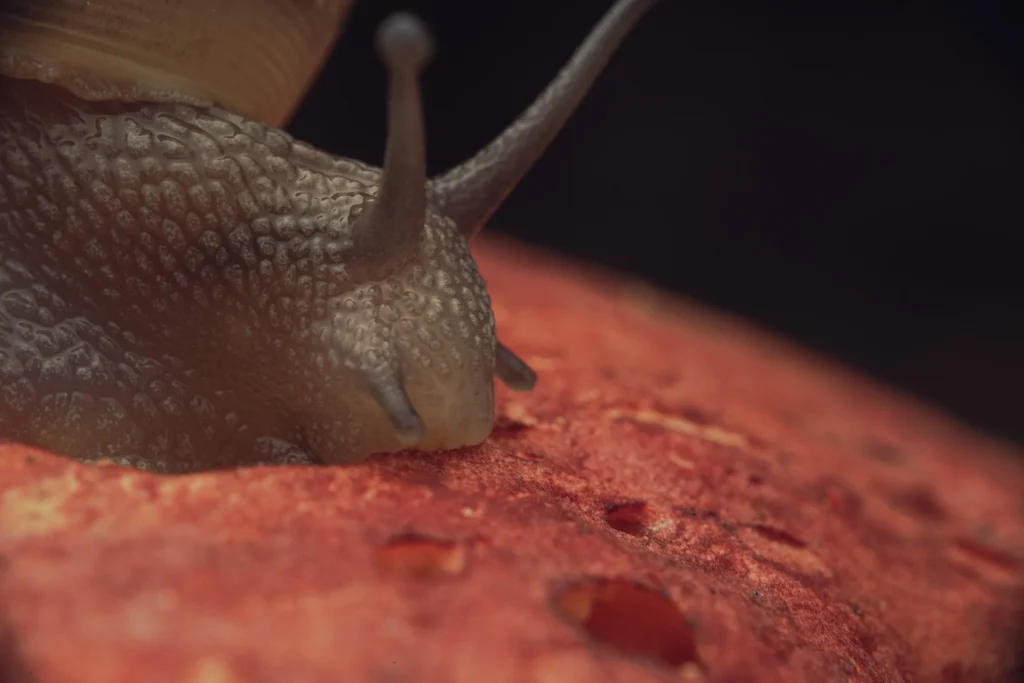Disclaimer:
This article is not meant to help with the identification of edible or non-edible mushrooms. Misidentification and subsequent eating of poisonous mushrooms can lead to serious illness or even death. Consult a local expert before consuming any wild mushrooms. Otherwise, follow this rule: If you have to ask, do not eat it.
Finding Things in the Forest
One of my favorite parts of nature photography is hiking through the woods at a slow pace and just taking everything in. It’s amazing how many things you can find just a few feet apart from the last thing you found. I went on a walk to see what mushrooms were popping up in the forest since the weather has been great for them (but shitty for us).
I found lots of inedible mushrooms, a few I know are edible, and a lot that I still don’t know much about. I even found one that I’ve never seen in this forest before and have yet to identify. I also found a snail on a bolete, eating a hole into it. That’s the thing I want to talk about in this post.

Identification
I am not an expert and would never claim to be, but I do want to know what I’ve found. After doing some quick searches, I’ve narrowed it down a Neohelix but I’m not sure which one. It could be Neohelix albolabris or Neohelix major… Or something else entirely – I’m not well versed on mollusks. The pictures looks similar, though. As for the mushroom, I knew it was some kind of bolete. Unfortunately, I didn’t take pictures of the whole mushroom because I was more interested in the snail. From what I recall of it though, it could be a Baorangia bicolor, which would make it the first edible red/yellow bolete I have found and identified out here. Of course, I would need to find more of them and do a lot more research before I decide to try it. Boletes are tricky – especially the red/yellow ones that bruise blue. I’d rather not take any chances since some mushrooms turn into rocket-fuel in your stomach.
What That Munch Sound Like?
While searching for more details on snails, I discovered a few interesting things. I knew some snails could eat toxic things, but didn’t realize what all that included. They will eat things such as poison oak, toxic mushrooms, and doodoo. They’re just hungry. Some snails become poisonous themselves from the things they ingest. So, even though I think the mushroom it is eating is not a poisonous mushroom, it could be poisonous and the snail would still eat it. So, don’t use snails to determine if something is edible.
I wish I had taken more time to try to focus on the mouth of the snail, but the best I got was a spit-bubbly little snail face. Their mouth anatomy is interesting. I knew a little about it from researching mystery snails a long time ago. According to one source, they scrape their food using their radula – a tongue-like mouth part covered in thousands of teeth. I even found an interesting setup someone used to record the sound of a snail eating (listen below).
You can read more about how their clip was recorded here: https://www.jtbullitt.com/smallsounds/20121109_snail/index.html
The rest of my findings are mostly just fascinating things about their anatomy, which I won’t discuss here. It’s a lot to take in. But, it was cool to find this snail eating a mushroom, doing some research, and finding that someone had recorded the sounds of a snail eating.
Resources
http://bioweb.uwlax.edu/bio210/2011/morgan_leah/nutrition.htm
https://www.jtbullitt.com/smallsounds/20121109_snail/index.html
https://www.mushroomexpert.com/boletus_bicolor.html
https://www.northcoastjournal.com/APRIL96/4_96_GAR.HTM
https://www.carnegiemnh.org/science/mollusks/va_neohelix_albolabris.html
https://www.carnegiemnh.org/science/mollusks/va_neohelix_major.html
